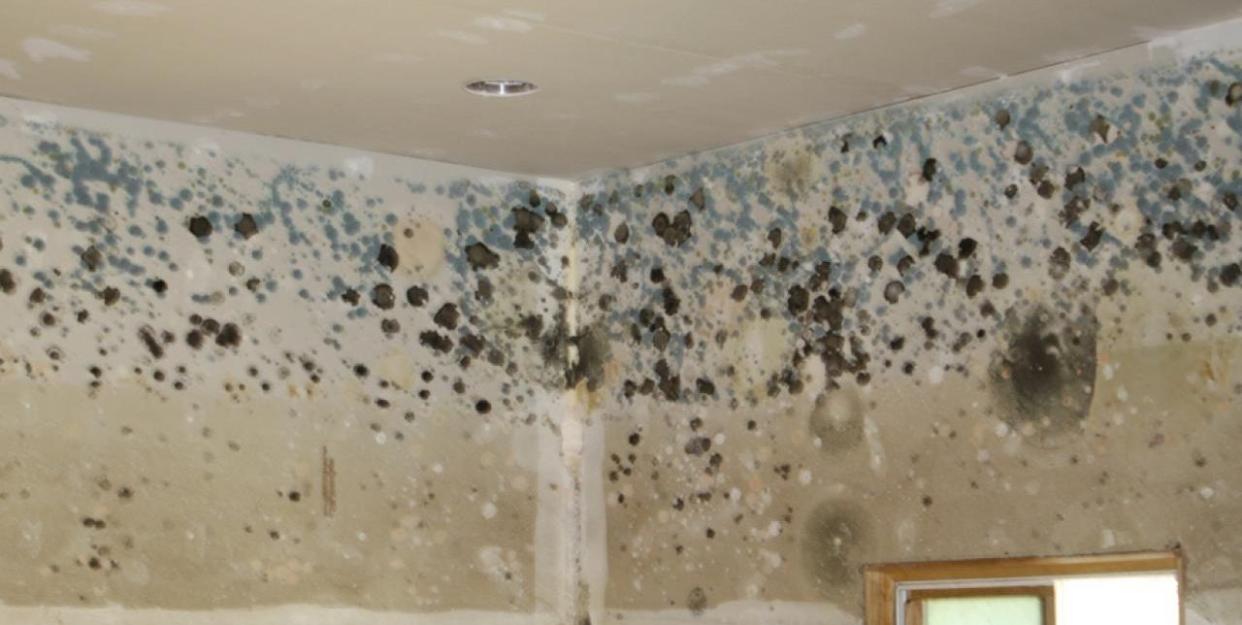What’s the Best Ingredient for Killing Mold?

"Hearst Magazines and Yahoo may earn commission or revenue on some items through these links."
When you hear the word "mold," especially if you’re moving into a new home or getting ready to start a renovation, a five-alarm bell goes off in your head. This is because it's just plain gross, but also because it can be hazardous. Indeed, if mold goes unchecked, it can wreak havoc and be an expensive home repair. We reached out to the cult-favorite company, Sweeten, which matches home renovation projects with vetted general contractors to give us expert advice on how to get rid of mold as well as tips on when it’s time to call in the pros.
“The key to mold control is moisture control,” advises Sweeten contractor Frank. “It grows wherever there is a lot of moisture including ceiling tiles and drywall. If water damage is spotted immediately, it is important to dry the damaged areas within 1-2 days to prevent mold growth.”
We'll take you through all the tools you need to eliminate mold, plus DIY hacks for small outbreaks that you can do by yourself. Remember, when you see mold, deal with it right away, so a little problem doesn’t grow into a home renovation nightmare.
Tool Kit to Get Rid of Mold
Mold is a fungus that thrives in moist spaces and reduces air quality which can lead to sickness. It often looks like a stain on the wall and comes in various colors like green, brown, or black and has a fuzzy texture. According to SBP, which focuses on disaster relief and recovery of homes after natural disasters, to get rid of mold, you need to round up the following essential items:
Bodysuit
Boots
Goggles
Dehumidifier or fan
Two pairs of gloves (one pair should be disposable)
The bodysuit should cover the entire body, including the ankles, for zero skin exposure. You'll need two pairs of gloves, and one of them should be disposable. The area should be well-ventilated, so open a window, and have a dehumidifier or fan running the entire time to remove moisture from the air. Lastly, throw out all clothing or gloves after the mold removal process.
DIY Treatments to Get Rid of Mold
You may be surprised to learn that the secret ingredient for killing mold is already in your cabinet. Typically mold is found in areas that naturally produce a lot of moisture, like the bathroom or a laundry room. So it should come as no surprise that a household cleaner like Clorox bleach can kill mold.
The cleaning instructions for bleach are straightforward, according to the CDC. “Use a bleach solution of no more than one cup of household laundry bleach per one gallon of water to kill mold on surfaces.”
Another simple home remedy is white vinegar (is there anything vinegar can’t do?). According to wikiHow, “Fill a spray bottle with plain white vinegar and do not dilute it. Next, generously spray the white vinegar directly onto the mold and let it sit for an hour before you do anything else. Once the hour is up, come back with a wire brush and scrub the surface vigorously to remove the mold. Lastly, wipe the surface dry with a microfiber cloth."
You may also be surprised to learn that your essential oils can do more than reduce stress and add a fragrance to your home. Eucalyptus and lavender oil, among others, have anti-fungal properties, according to the Green Orchard Group, which specializes in mold removal.
When To Call an Expert
It’s important to recognize when you need to call in the pros. You can start by taking a mold test in the area. If it smells musty or mold appears in multiple places throughout the room, it’s time to call the experts.
When starting a renovation, Sweeten shares that a general contractor always goes on-site to assess any mold damage behind walls or around windows before starting the project. If mold is discovered, depending on the extent of the damage, the affected sheetrock area and wall insulation are removed.
“Clorox is applied, and new insulation and sheetrock are installed,” notes Sweeten contractor Frank. “For smaller areas, Clorox is used to disinfect the molded areas on the sheetrock to stop the growth followed by an application of KOLZ-2 All Purpose Stain Blocker or Zinsser Stain Blocker. Primer and paint complete the repair.” This process normally takes a few days or a week to complete.
Additional Tips to Remove Mold
Below are a few additional notes to keep in mind when removing mold according to the CDC to ensure you have a smooth and safe process:
Have your home heating, ventilating, and air-conditioning system (HVAC) checked and cleaned by a service professional experienced in mold clean-up before you turn it on. If the system was flooded with water, turning it on will spread mold throughout the house.
Don’t paint or patch mold
take a second mold test after the cleaning process to confirm space is clear
do not have children help during the cleaning process
wear protective gear and discard it after cleaning
Follow House Beautiful on Instagram.
You Might Also Like

